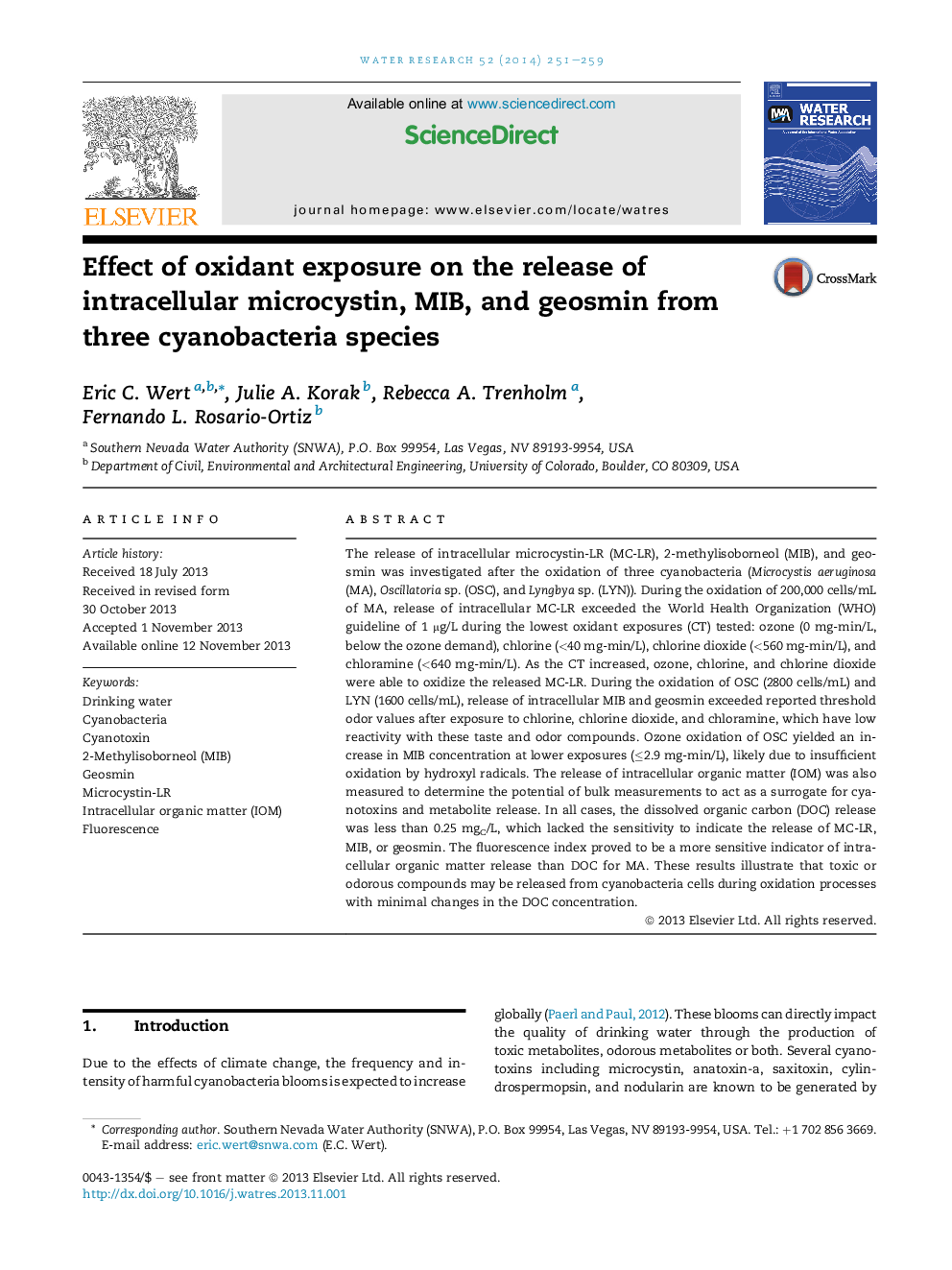| کد مقاله | کد نشریه | سال انتشار | مقاله انگلیسی | نسخه تمام متن |
|---|---|---|---|---|
| 4481680 | 1623116 | 2014 | 9 صفحه PDF | دانلود رایگان |

• Oxidation resulted in the release of intracellular toxic or odorous metabolites.
• Released microcystin-LR concentrations exceeded 1 μg/L.
• Released MIB and geosmin concentrations exceeded threshold odor values.
• Fluorescence index detected the release of IOM from cyanobacteria.
The release of intracellular microcystin-LR (MC-LR), 2-methylisoborneol (MIB), and geosmin was investigated after the oxidation of three cyanobacteria (Microcystis aeruginosa (MA), Oscillatoria sp. (OSC), and Lyngbya sp. (LYN)). During the oxidation of 200,000 cells/mL of MA, release of intracellular MC-LR exceeded the World Health Organization (WHO) guideline of 1 μg/L during the lowest oxidant exposures (CT) tested: ozone (0 mg-min/L, below the ozone demand), chlorine (<40 mg-min/L), chlorine dioxide (<560 mg-min/L), and chloramine (<640 mg-min/L). As the CT increased, ozone, chlorine, and chlorine dioxide were able to oxidize the released MC-LR. During the oxidation of OSC (2800 cells/mL) and LYN (1600 cells/mL), release of intracellular MIB and geosmin exceeded reported threshold odor values after exposure to chlorine, chlorine dioxide, and chloramine, which have low reactivity with these taste and odor compounds. Ozone oxidation of OSC yielded an increase in MIB concentration at lower exposures (≤2.9 mg-min/L), likely due to insufficient oxidation by hydroxyl radicals. The release of intracellular organic matter (IOM) was also measured to determine the potential of bulk measurements to act as a surrogate for cyanotoxins and metabolite release. In all cases, the dissolved organic carbon (DOC) release was less than 0.25 mgC/L, which lacked the sensitivity to indicate the release of MC-LR, MIB, or geosmin. The fluorescence index proved to be a more sensitive indicator of intracellular organic matter release than DOC for MA. These results illustrate that toxic or odorous compounds may be released from cyanobacteria cells during oxidation processes with minimal changes in the DOC concentration.
Figure optionsDownload high-quality image (169 K)Download as PowerPoint slide
Journal: Water Research - Volume 52, 1 April 2014, Pages 251–259